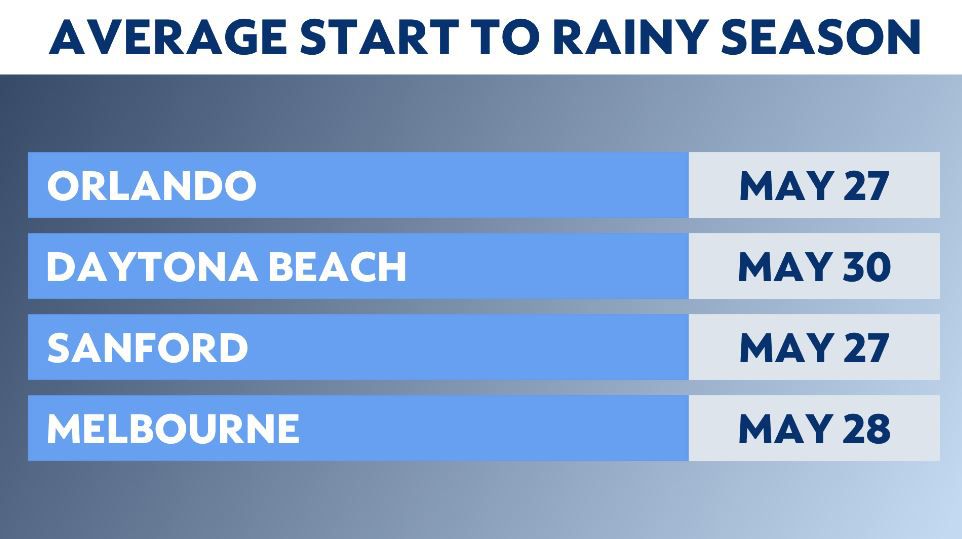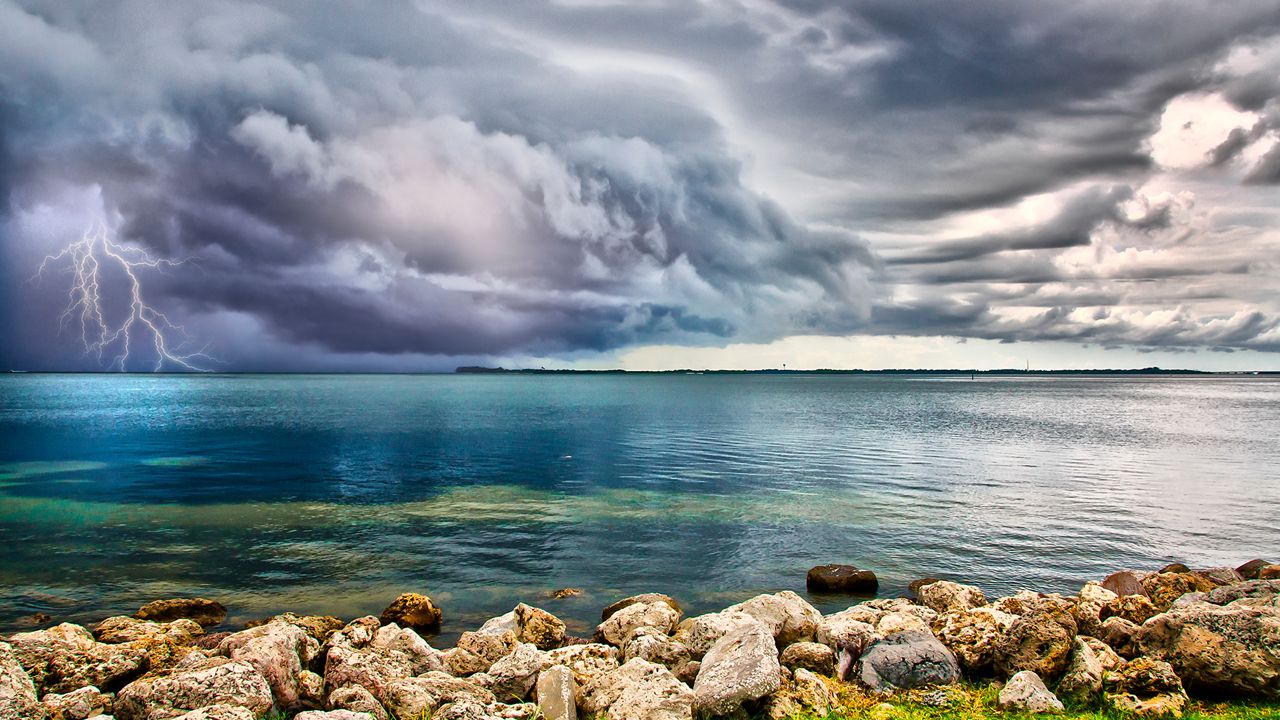We've already had a little taste of the summer heat and storms that we are all too familiar with in Central Florida, but it is not rainy season until the cold fronts stop coming into the region.
During the summer months, we stop getting those cold fronts that help provide relief from the heat and humidity.
Rainy season is when Central Florida relies on the daily sea breeze collisions from the east and west coasts to trigger daily storms.
The sea breezes are driven by the differences in temperature between the ocean waters and land.
Land heats much faster than the water. This temperature difference between the two leads to a pressure gradient between the land and the ocean.
The wind is then driven to blow from the relatively cooler air over the oceans to the warmer air over land in Central Florida.
The wind from the east coast then collides with the air and wind from the west coast. When the two breezes collide, this lifts the air upward, resulting in the development of rain and thunderstorms.
Climatologically, rainy season normally begins in late May and runs through mid-October. But, this can vary from year-to-year.
In Orlando, the earliest onset to rainy season was in 1966 on May 5. The latest start to the wet season was in 1998, when it did not start until early July.
The average start date for the City Beautiful is May 27.





